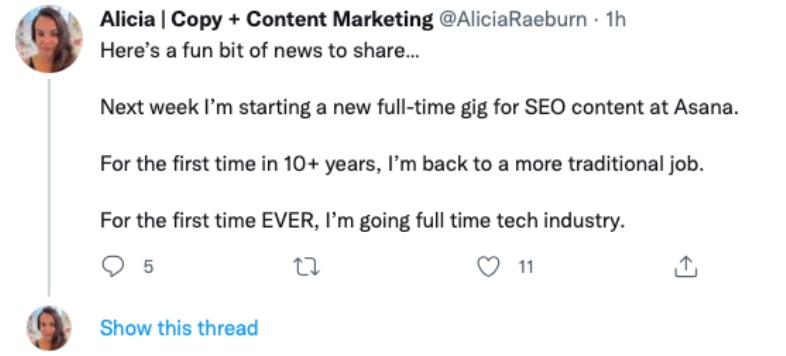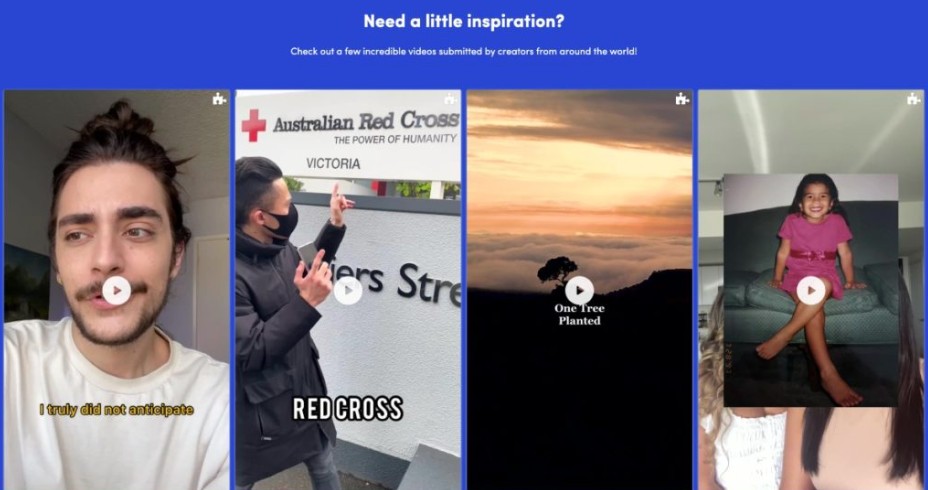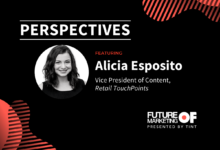You hear the ding in your inbox and look at the message.
This isn’t a work message. It’s not another newsletter. It’s not a promotional email from the company that won’t stop spamming you.
This one is from your favorite brand. You immediately open it and read the words “You’re invited…”
You keep reading on to find the brand is hosting an event in your city, and as a member of their community, you get to come. There will be lunch, networking, and free products to take home.
As you turn to your calendar, disappointment washes through your chest. You’re scheduled at that time. You think for a second and click on the “Not attending” option on the calendar invite.
You quickly change your mind, hop back into your inbox, and grab your ticket to the event. What will you wear? Who will you meet there?
On the other end of the funnel, the brand sees you secured your ticket to the event. They count 100 other people who have confirmed they’re coming. Their marketing team is thrilled. Their email worked, and it’s confirmed something they’ve been working towards for months…
They have a brand community.
And they just tapped into the marketing superpower of brand ambassadors, customer testimonials, and user-generated content.
What is a Brand Community?
A brand community loves your products, avidly shares them with their friends and online audiences, and hangs out with each other (either online or offline).
While a brand community can be referred to as your social media audience, a true brand community is the people buying your products, engaging with your content, sharing your products, and spending time around other community members. They’re the people who get your email, open it, click on the links, and grab the ticket to your event.
Think of them as your biggest fans – and you want as many of them as possible.
The Benefits of Building Community Around Your Brand
When you build a community around your brand, you don’t just build a list of customers. A brand community goes much further than increasing your sales figures. With a brand community, you’re getting access to your mega-fans. These are the people who would camp out to be the first in line to get your products when they drop in-store and are asking you questions through the Instagram Story Question Sticker on your latest product drops.
They’re the ones raising their hand and telling you, “I love your products, and I resonate with your brand’s message, values, and mission.”
Brands with communities like this live in a beautiful marketing world of serious benefits. Here are a few benefits that come with building a brand community:
- Longer customer lifetime value (happy customers = long-term customers)
- Increased average order value (super fans buy more products)
- Organic user-generated content (videos on unboxing, how to use the product, their results)
- Result-driving feedback (they’ll tell you what products they want to see next)
- Customer-oriented brand relationship (customers make friends with other customers and want to stay part of your community)
Brand communities turn into more brand touchpoints, something Gaurav Gupta, Head of Omnichannel Marketing and Martech at Circles.life, is prioritizing:
“We want to amplify [our content strategy] by adding more engagement points, more touchpoints within the website, and reduce the exit rates.”
Brand communities tap into all of these benefits when they’re done the right way. Check out these 2 brands masterfully building out their communities, and in turn their products and brands.
Examples of Brand Communities
Trends, a Hubspot-owned community of entrepreneurs and business-minded people, offers a community as part of joining their paid newsletter. Inside the Facebook group, community members ask each other for advice, and the community rallies to answer their questions. Trends successfully created a brand community that keeps their customers long-term.
Anybody who chooses to stop paying for their weekly newsletter loses access to conversations like these:
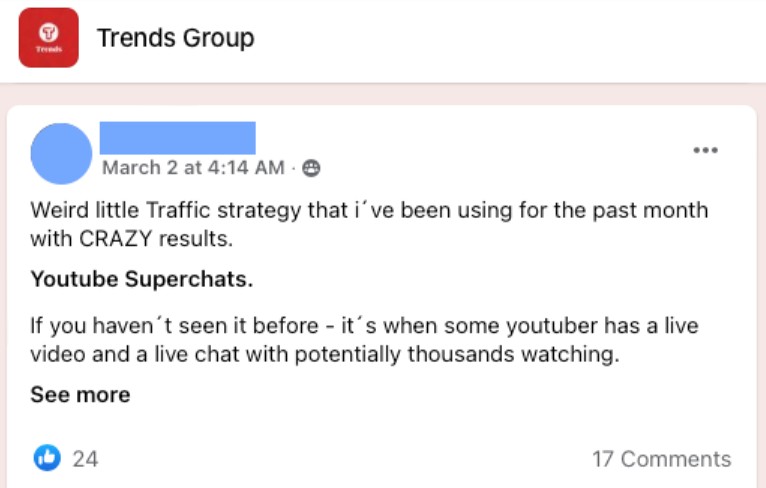
Another impressive brand community is built around a passion for great grilling. There are 174,600 members inside this Facebook group for Traeger Grill Owners. Inside the group, people with Traeger grills swap recipes, advice, and best grilling practices. Traegers brand community is built around its happy customers…helping their happy customers.
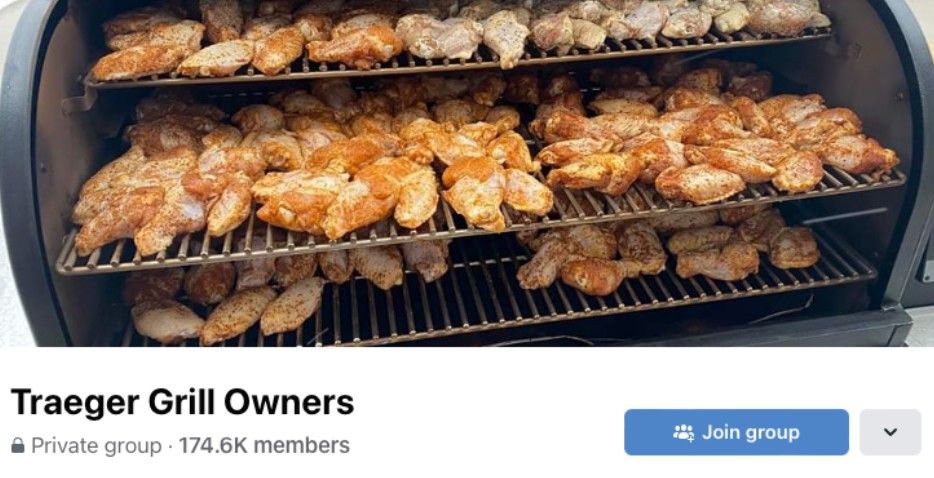
Trends and Traeger are great examples of brand community done right. But, how do you create a community that’s willing to make user-generated content, talk with other members, and keep buying your products?
Through this 4-step framework.
How to Build a Successful Brand Community
Building a brand community doesn’t happen by accident. It’s not a matter of crossing your fingers and hoping your customers show up for you. It’s about telling them how they can get involved and walking them through what it means to be part of your community.
There are 4 steps every brand needs to take to build a sustainable, productive brand community.
Community Building Step #1: What identity does your brand give community members?
When somebody becomes a part of your community, they’re choosing to align with a specific identity. They could be identifying as a business owner or someone interested in business (like Trend’s community members) or as someone who loves grilling on their Traeger.
There’s something about your brand that makes people proud to be part of it. This also includes employees who are happy to make employee-generated content talking about how they’re part of a specific organization (a.k.a community). Take Alicia for example, who excitedly announced to Twitter that she had a new job at Asana.
Figuring out the identity your community gives its members will start to build out Brand Building Step #2 for you.
Community Building Step #2: What benefits do your community members get from joining?
This step builds on top of the first. Once you know the identity your community members are aligning with, you can build a community helping them further their quest in that specific area.
In this step, you’re taking a page out of the marketing playbook to figure out their pain points and ideal solutions. The pain points get turned into the copy promoting your community. The ideal solutions are what your community can provide (like somebody who wants to use their Traeger but ran out of fun recipes to try).
TikTok used the #CreativityForGoodCampaign hashtag to connect their creative community members who would love to get recognition at Cannes film festival, but don’t make Cannes approved content (movies):
“Since TikToks didn’t quite fit into a specific category within the [Cannes Lion] competition, we decided to give all creators the opportunity to make a positive impact while flexing their creative muscles…”
Brand communities are fun…until they’re not. To make sure you don’t run into problems down the line, it’s crucial to set rules and boundaries with your community members.
Community Building Step #3: What parameters do you need to put in place to keep things positive and productive?
This isn’t about being the fun police. It’s about making sure your community is a safe place for everybody. Your participation in ensuring this depends on the type of community you’ve built.
If you have a Facebook group, like Trends, you take full responsibility to make sure conversations are safe, positive, and productive. But, if your community is housed in your social media audience—you have limited control. You can ensure your content and comments stay positive and productive, but you can’t control other people’s content about your community.
Understanding how much responsibility you have in running your community is crucial to keeping the peace and knowing how much is under your team’s control (and what is not). Without this, you’ll never make it to step 4 of brand building.
Community Building Step #4: What metrics tell you the community is a success?
Time to turn on that left brain and look at the analytics. What tells you that you’ve successfully built out an engaged brand community? For Trends and Traeger, a successful brand community can be seen in the number of people in their Facebook group.
But, these groups are only successful if people are participating. 16,000 members don’t mean anything if nobody answers their community members’ questions. The same applies to social media. A million followers looks great, but if you can only get 1,000 likes per post—do you have a real community ensuring the 5 benefits we talked about above?
Success metrics for communities are:
- Improved customer lifetime value
- Increased average order value from community members
- Increased user-generated content collected in your UGC Studio
- Engagement in your surveys
- Percentage of engaged community members out of total community members
Based on the type of community you choose to build, some of these metrics will mean more than others. There’s one that should always be prioritized, though. User-generated content.
If your community isn’t creating user-generated content about your products…you don’t have an engaged community. Your community should be a marketing tool. Communities that regularly post UGC about brands are the ones that turn community management into a content production machine.
Here’s what Adweek has to say about UGC, “By boosting posts created by regular people, brands are breaking down the barriers between corporations and their audiences while collecting real-time consumer feedback.”
Every Brand Needs a Community
Businesses prioritize building communities for a reason.
With a community, your brand becomes bigger than your team. It grows into an extension of your hard work creating marketing content (a.k.a UGC) for you, promoting your products, and keeping people interested in your brand—without you needing to do anything.
We cover topics like building brand communities, visual storytelling, and how to use video to scale your content inside the Future of Marketing.
Join over 30,000 marketing leaders learning the most relevant trends, resources, and strategies embracing user-generated content every week. Subscribe here.

